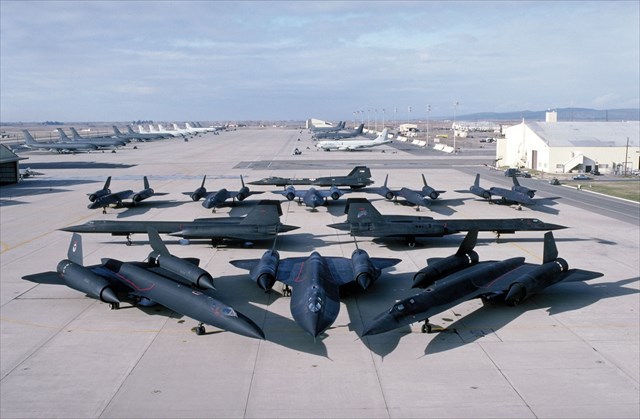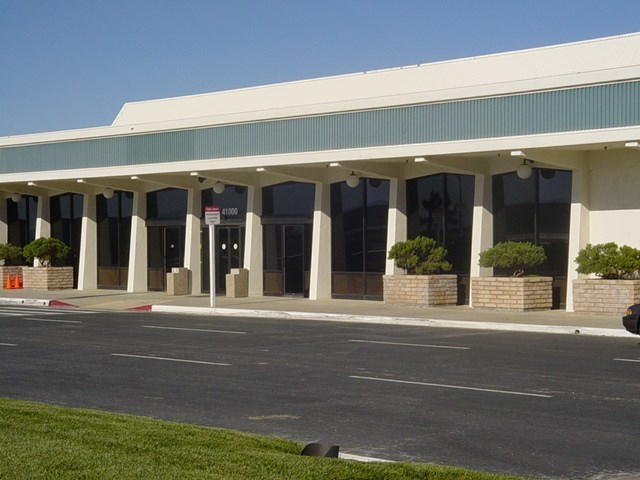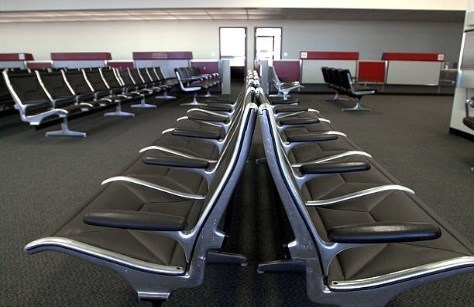The posted coordinates take you to the Palmdale Regional Airport Terminal. I considered temporarily disabling this cache, but after talking with some caching friends, the history of the location and just seeing the little building for scale compared to a "real" airport (lol) is interesting and worth a visit. Perhaps I should make the objective now to have as many visitors as possible with only a pic of themselves/device at the fence. Kindness matters. Enjoy today.
Antelope Valley is also nicknamed the aerospace valley. Many world renowned pilots and aeronautic legends are connected to the AV. More planes and parts than I can list have been manufactured here. What better way to bring attention to a local landmark that has had a worldwide impact, while many outside of our area don't realize our important part in American aeronautic history.
The History of Plant 42
Plant 42 had its early beginnings dating back to 1935 when this airstrip was used as an emergency airstrip for the Bureau of Air Commerce. In 1940, Palmdale Army Airfield was activated as a United States Army Air Corps (later Air Forces) airfield for use as an emergency landing strip and for B-25 Mitchell medium bomber support training during World War II. It was one of many intermediate fields that were used as auxiliary fields or emergency landing fields by the AAF during World War II.
Palmdale Army Airfield was declared a surplus facility in 1946 and was purchased by Los Angeles County for use as a municipal airport. The outbreak of the Korean War in 1950 caused the Air Force to reactivate the property for use in final assembly and flight testing of military jet aircraft.
Both the Air Force and its aircraft contractors needed a location away from major population centers - due to sonic booms, other noises and security concerns - but close enough to the major centers of aircraft design and production, while having excellent flying weather the year around. The land which became Plant 42 fit these criteria. Consequently, the Air Force agreed to purchase the land from Los Angeles County in 1951.
The Air Force awarded a contract to Lockheed Aircraft to develop the master plan for the site. The plan was to construct a facility that would meet the requirements of full war mobilization and augment the industrial production potential of the major airframe manufacturing industry in southern California.

Palmdale Airport in 1953 showing its World War II configuration.
The concept for Air Force Plant 42 originated in the challenge of flight testing high performance jet aircraft over heavily populated areas. Following approval of the Master Plan in 1953, the Palmdale Airport officially became Air Force Plant 42; ownership of the installation was transferred to the Federal Government in 1954. With USAF encouragement, Lockheed, looked upon with favor by the Air Force at this time, established its permanent presence at Plant 42. It signed a lease in 1956 for 237 acres to use Palmdale Airport for final assembly and flight testing.
Lockheed's famed "Skunk Works" (black projects), which developed such aircraft as the U-2, SR-71 Blackbird and F-117 Nighthawk, is at Site 10 of the complex (actually private property with secure access to Plant 42 airfield), near Sierra Highway, and relocated to Plant 42 from its original Burbank-Glendale-Pasadena Airport (now Bob Hope Airport) site in Burbank after the end of the Cold War. Its present hangar was constructed in 1968 and the outer walls of the structure were put up in a matter of days.

Lockheed Skunk Works aircraft parked on the Palmdale ramp.
Today, Plant 42 is an aerospace industrial area and is a GOCO (government owned, contractor operated) facility. Boeing, Lockheed Martin, and Northrop Grumman all have assembly operations on Plant 42 grounds. Several other, smaller, aerospace contractors and sub-contractors, also operate at Plant 42. Located on 5,800 acres, Plant 42 is an Air Force Industrial Plant, and has two 12,000 foot runways and well as 8 separate production sites. The US Air Force owns, operates, and maintains the two runways and other common use facilities.
Palmdale Regional Airport
In 1970, Los Angeles World Airport began to purchase raw land in the east Palmdale area, with the long term goal of someday building an international airport. Palmdale Regional Airport is run by theLAWA and has a small airline terminal in the southwest corner of the airport and began civilian operations in 1971. In 1989, LAWA and the US Air Force entered into a Joint Use Agreement allowing for commercial air service from Plant 42. During the 1990s, airlines operated out of the Palmdale Regional Airport, which consisted of the terminal and parking lot on leased land. The last airline pulled out in 1998.
After several airlines were unable to sustain operations at Palmdale, the terminal was remodeled and reopened in May 2007. Convincing airlines of the marketability of the airport without subsidies has been difficult. Although Palmdale Airport offers airline passengers a quicker ground travel time from Sherman Oaks than the LAX airport car trip down the 405 freeway, it has not provided the range of destinations that would make passengers choose it over LAX and Bob Hope Airport. The communities around LAX and Burbank do not want the noise of additional flights, but most Antelope Valley residents support expanding service at Palmdale.

The terminal building when it was operational.
In January 2007 subsidies valued at $4.6 million, with $2 million slated to underwrite losses incurred from providing airline service, were raised to restore commercial service to the airport. The incentive package included a $900,000 grant from the federal government to the city of Palmdale to develop regional airport service. In February 2007 the city of Palmdale and LAWA selected United Airlines to provide service between Palmdale and San Francisco International Airport (SFO). United canceled all flights beginning December 7, 2008, the day after the expiration of the federal grant and 18 months after the beginning of the SFO-PMD services.
The airport currently does not have any scheduled passenger airline service.

Palmdale Regional Airport sits empty and unused in 2012.
Sources: United States Air Force Plant 42 Wikipedia, Palmdale Regional Airport Wikipedia, http://www.jpbroker.com/pairport.html, & Los Angeles World Airports Website.
Virtual Requirements
Go to the waypoint "gate" and it will either be open or closed. *2023 Update Palmdale Regional Airport can be seen off to the right. Regrettably, the fence is permanently locked now. Come. Enjoy the history lesson, post the most famous locked gate in the AV and watch for cool things flying over head. If it is open skip to the next paragraph. If it is closed, please take a photo of yourself near closed gate. Per HQ guidelines "a face is not required in the photo". If you don't want to include your face take a photo of you doing a "thumbs up" or of your GPS at the location. Get creative.
Virtual Reward - 2017/2018
This Virtual Cache is part of a limited release of Virtuals created between August 24, 2017 and August 24, 2018. Only 4,000 cache owners were given the opportunity to hide a Virtual Cache. Learn more about Virtual Rewards on the Geocaching Blog.
Thank you to elrojo14 for helping me rework this Virtual cache. He has embodied the best of geocachers and those I've met (not a hater), kind, friendly, interesting and ready to help a fellow cacher. Thanks new friend. I hope you enjoy learning more about Plant 42's and the Palmdale Regional Airport Terminal's history.